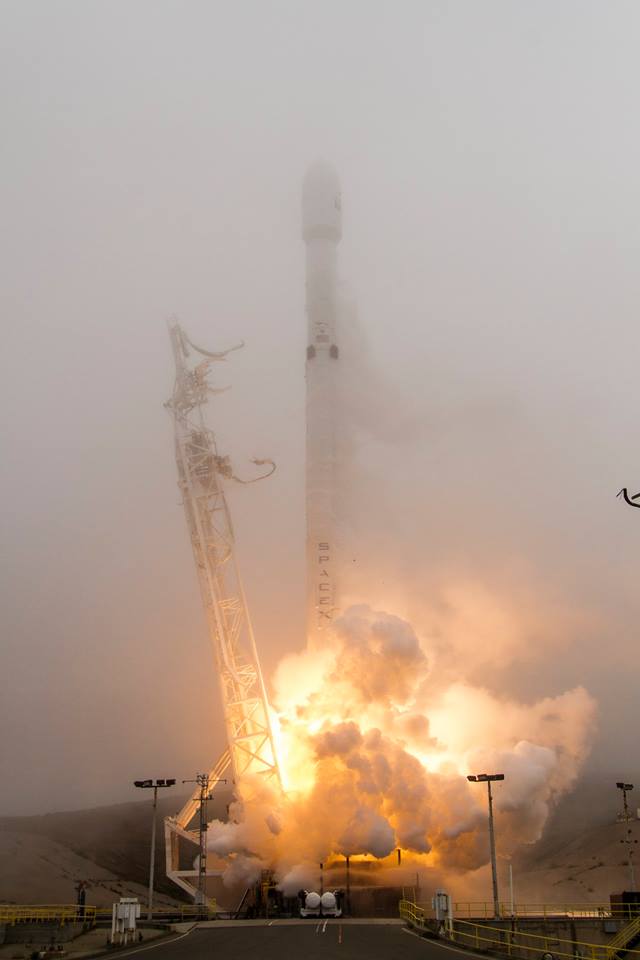
KENNEDY SPACE CENTER, FL – With Sunday’s successful Falcon 9 blastoff for Iridium Communications joining rocketry’s history books, Elon Musk’s SpaceX accomplished a double headed American space spectacular this weekend with 2 launches and 2 booster landings in 2 days from 2 coasts for 2 commercial customers – in a remarkably rapid turnaround feat that set a new record for minimum time between launches for SpaceX.
On Sunday, June 25 at 1:25 p.m. PDT (4:25 p.m. EDT; 2025 UTC) a SpaceX Falcon 9 rocket successfully launched a second set of ten Iridium Next mobile voice and data relay communications satellites to low Earth orbit on the Iridium-2 mission from SLC-4E on Vandenberg Air Force Base in California.
“All sats healthy and talking,” tweeted Matt Desch, Iridium Communications CEO, soon after launch and confirmation that all 10 Iridium NEXT satellites were successfully deployed from their second stage satellite dispensers. Iridium is a global leader in mobile voice and data satellite communications.
“It was a great day!”
The US West Coast Falcon 9 liftoff of the Iridium-2 mission from California on Sunday, June 25 took place barely 48 hours after the US East Coast Falcon 9 liftoff of the BulgariaSat-1 mission from Florida on Friday, June 23.
Without a doubt, Musk’s dream of rocket reusability as a here and now means to slash the high costs of launching to space and thereby broaden access to space for more players is rapidly taking shape.
Following separation of the first and second stages, the Falcon 9’s 15 story tall first stage successfully landed on the “Just Read the Instructions” droneship ocean going platform stationed several hundred miles out in the Pacific Ocean off the coast of California, despite challenging weather conditions.
Indeed the droneships position was changed in the final minutes before launch due to the poor weather.
“Droneship repositioned due to extreme weather. Will be tight,” tweeted Musk minutes before liftoff.
The 156 foot tall booster touched down about 8 and ½ minutes after liftoff from Vandenberg AFB.
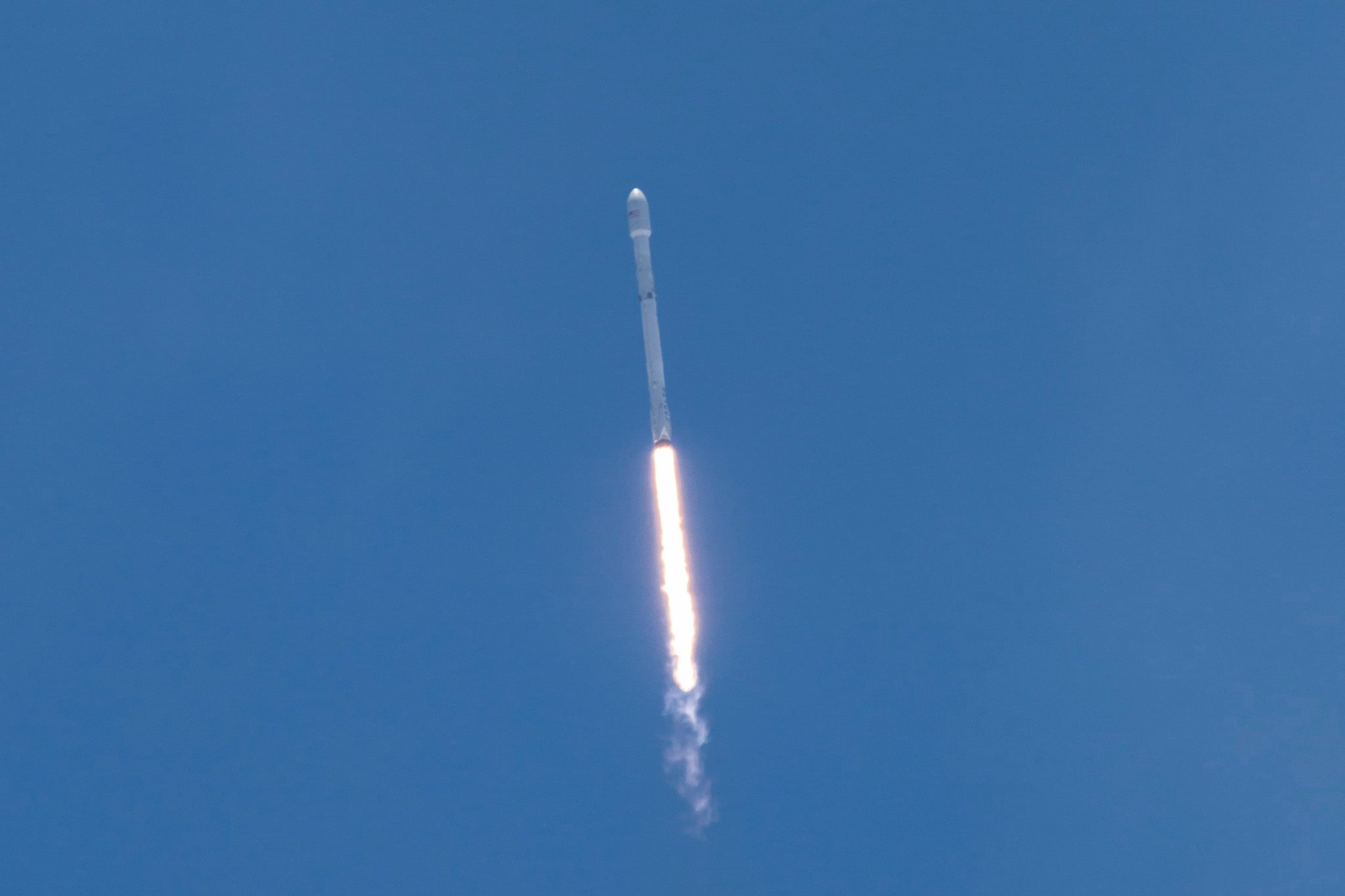
The launch, landing and deployment of the 10 Iridium Next satellites was all broadcast live on a SpaceX webcast.
The perfectly executed Iridium-2 and BulgariaSat-1 launch and landing duo clearly demonstrates the daunting capability of SpaceX’s privately owned and operated engineering team to pull off such a remarkable feat in nimble fashion.
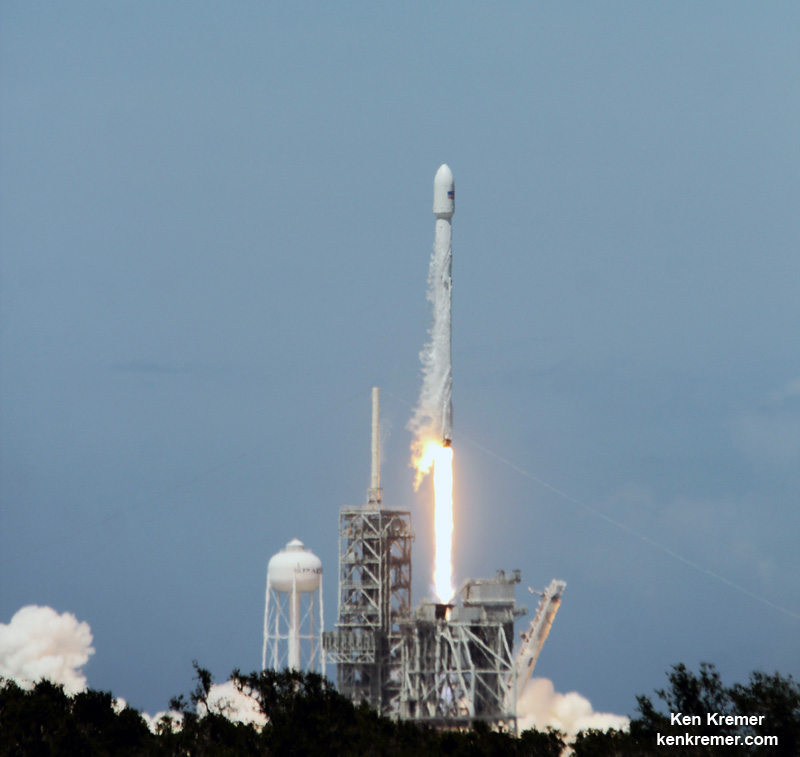
The stage was set for the unprecedented Falcon 9 launch doubleheader just a week ago when SpaceX CEO and billionaire founder Elon Musk tweeted out the daring space goal after all went well with the Florida Space Coast’s static hotfire test for the first in line BulgariaSat-1 flight.
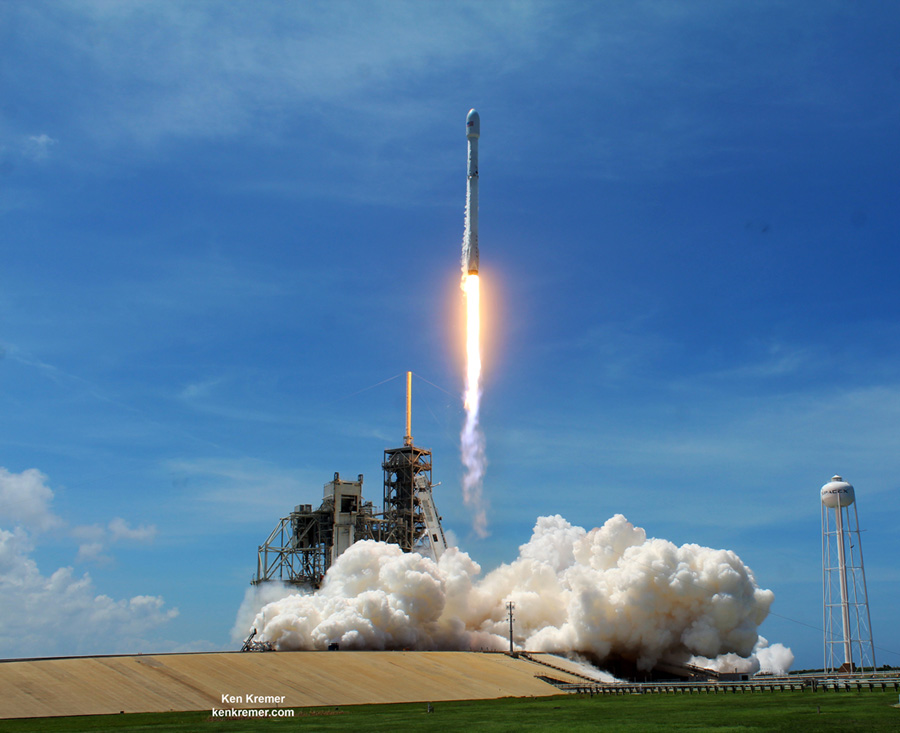
Check out the expanding gallery of Bulgariasat-1 eyepopping photos and videos from several space journalist colleagues and friends and myself.
Click back as the gallery grows !

Sunday’s Iridium 2 flight was Iridium Communications second contracted launch with SpaceX.
“This payload of 10 satellites was deployed into low-Earth orbit, approximately one hour after a SpaceX Falcon 9 rocket lifted off from Vandenberg,” Iridium said in a statement.
The Mini Cooper sized Iridium NEXT satellites each weigh 1,900 pounds, totaling approximately 19,000 pounds placed into space. That is the weight of a semi tractor trailer truck!
The inaugural Iridium 1 launch with the first ten Iridium Next satellites took place successfully at the start of this year on Jan. 14, 2017.
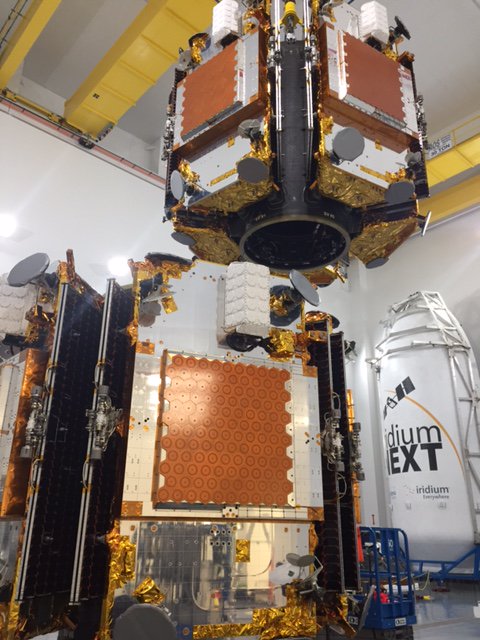
The new set of ten Iridium Next mobile relay satellites were delivered into a circular orbit at an altitude of 625 kilometers (388 miles) above Earth.
They were released one at a time from a pair of specially designed satellite dispensers at approximately 100 second intervals.
“Since the successful January 14, 2017 launch, Iridium NEXT satellites have already been integrated into the operational constellation and are providing service. The first eight operational Iridium NEXT satellites are already providing superior call quality and faster data speeds with increased capacity to Iridium customers. The two additional satellites from the first launch are continuing to drift to their operational orbital plane, where upon arrival they will begin providing service.”
Iridium 2 is the second of eight planned Falcon 9 launches to establish the Iridium NEXT constellation which will eventually consist of 81 advanced satellites.
At least 75 will be launched by SpaceX to low-Earth orbit, with 66 making up the operational constellation.
The inaugural launch of the advanced Iridium NEXT satellites in January 2017 started the process of replacing an aging Iridium fleet in orbit for nearly two decades.
Nine of the 81 will serve as on-orbit spares and six as ground spares.
“Now, and for approximately the next 45 days, these newly launched satellites will undergo a series of testing and validation procedures, ensuring they are ready for integration with the operational constellation,” said Iridium.
“We are thrilled with yesterday’s success. These new satellites are functioning well, and we are pressing forward with the testing process,” said Scott Smith, chief operating officer at Iridium.
“Since the last launch, the team at our Satellite Network Operations Center (SNOC) has been anxiously awaiting this new batch of satellites. There is a lot of work to do, and we are up for the challenge.”
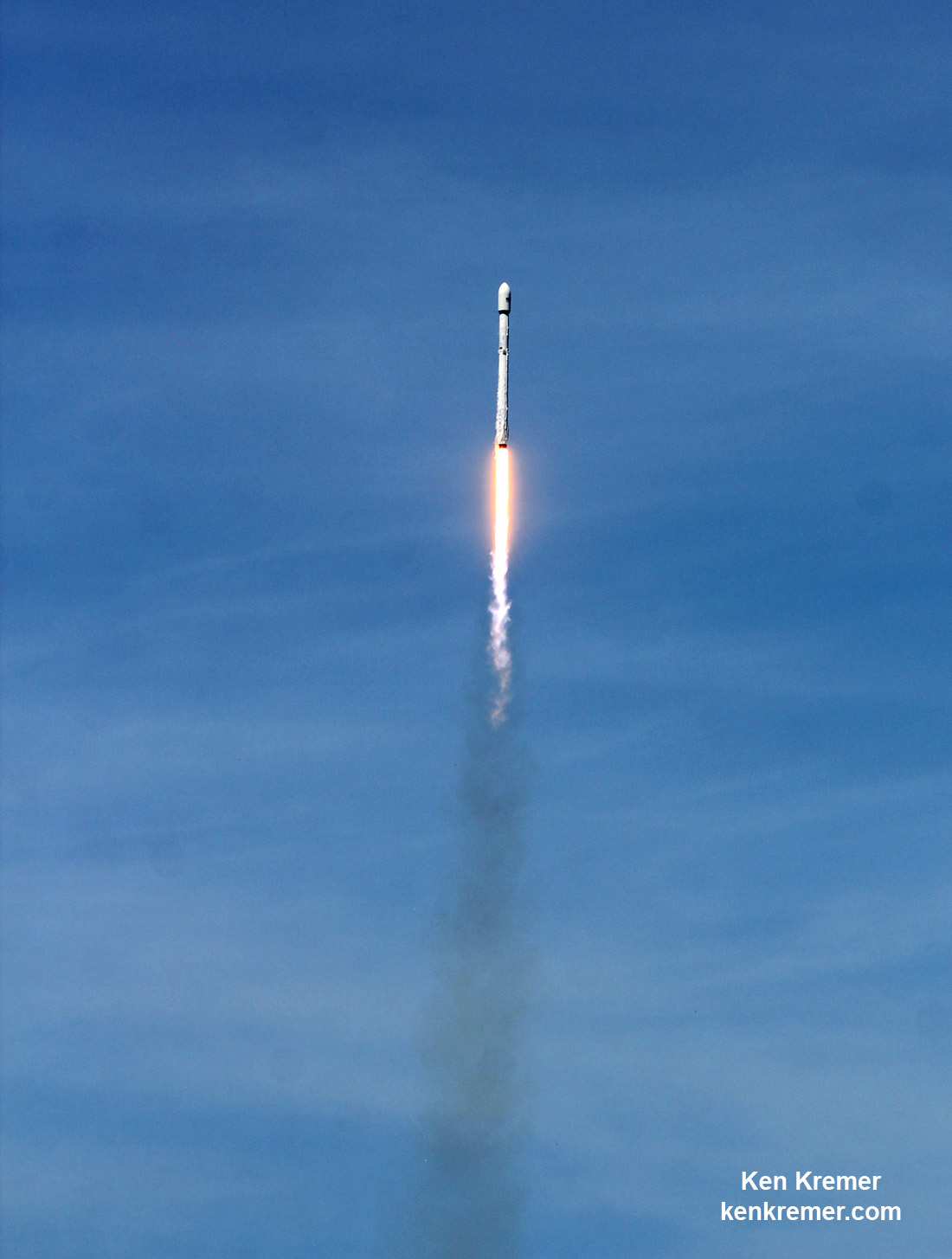
BulgariaSat-1 and Iridium-2 count as the eighth and ninth SpaceX launches of 2017.
Including these two ocean platform landings, SpaceX has now successfully recovered 13 boosters; 5 by land and 8 by sea, over the past 18 months.
Both landing droneships are now headed back into their respective coastal ports.
It’s a feat straight out of science fiction but aimed at drastically slashing the cost of access to space as envisioned by Musk.
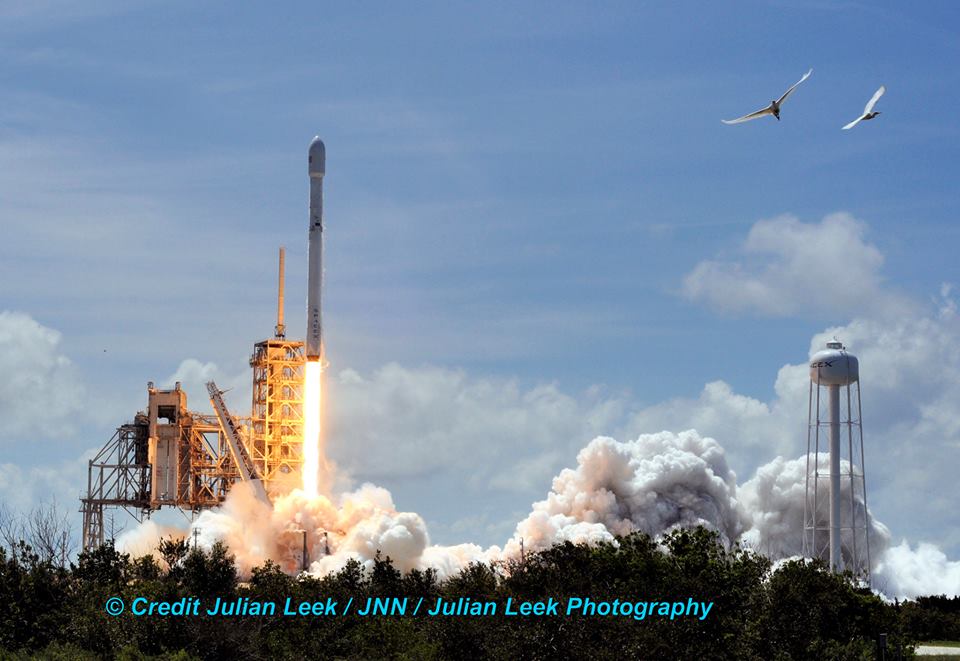
Watch this BulgariaSat-1 launch video from KSC pad 39A
Video Caption: Launch of SpaceX Falcon 9 on June 23, 2017 from pad 39A at the Kennedy Space Center carrying BulgariaSat-1 TV broadband satellite to geosynchronous orbit for BulgariaSat, which is Bulgaria’s 1st GeoComSat – as seen in this remote video taken at the pad. Credit: Ken Kremer/kenkremer.com
Watch for Ken’s onsite mission reports direct from the Kennedy Space Center and Cape Canaveral Air Force Station, Florida.
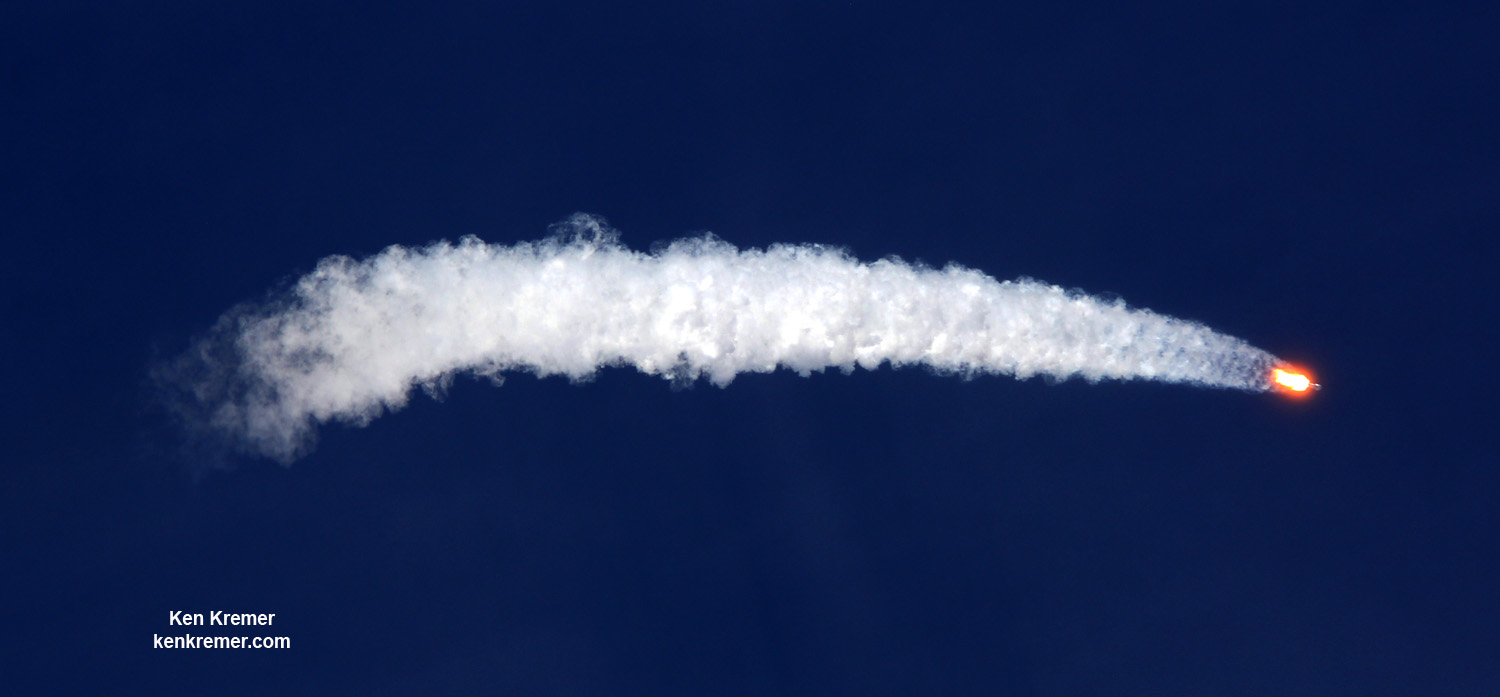

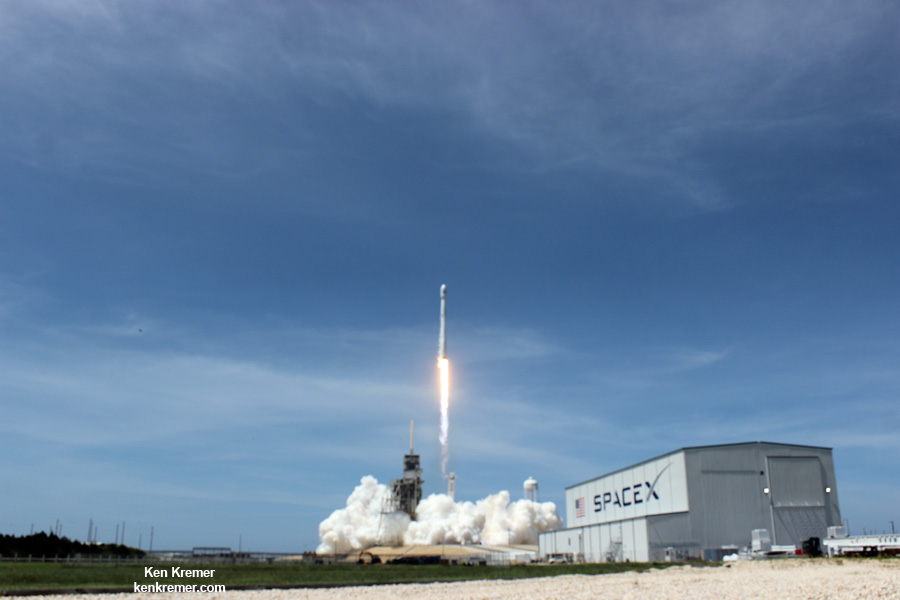
Stay tuned here for Ken’s continuing Earth and Planetary science and human spaceflight news.
Ken Kremer
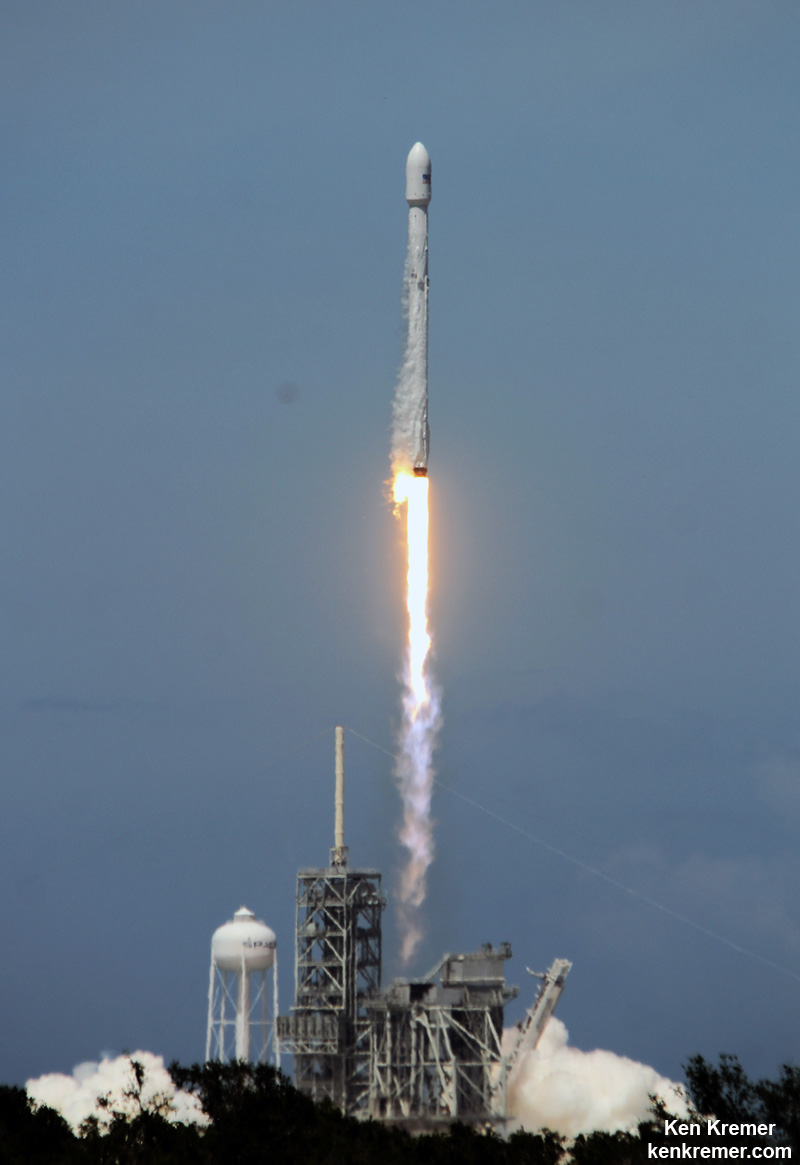
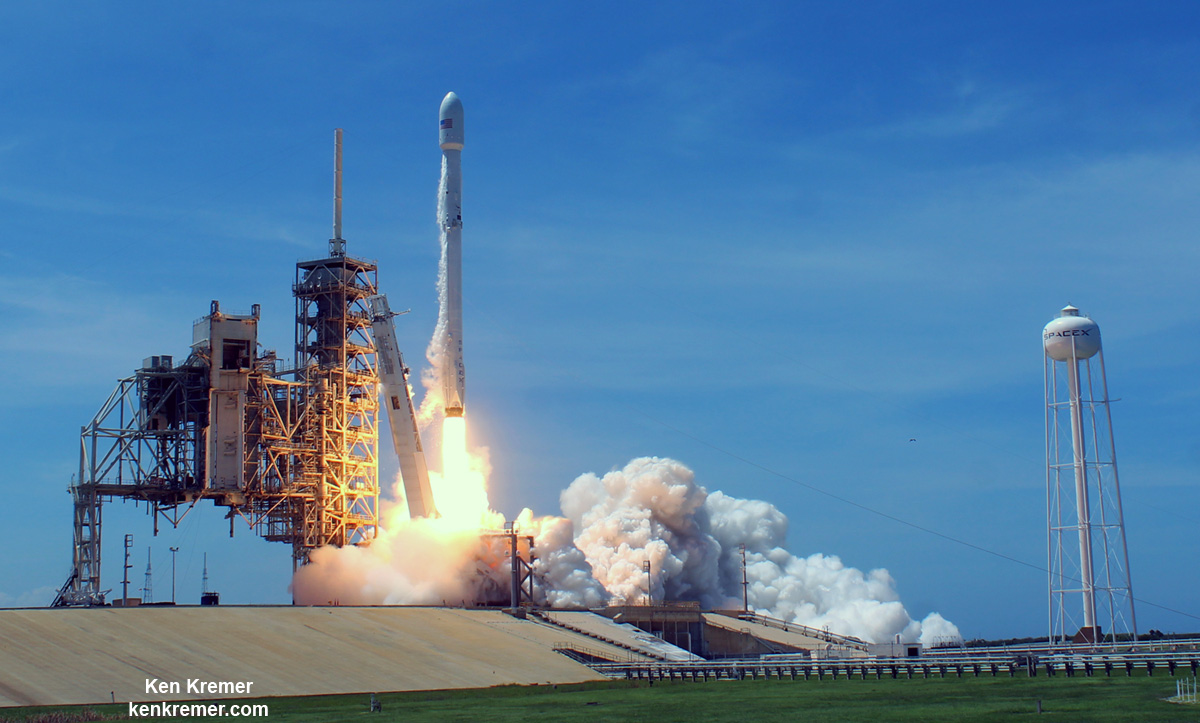
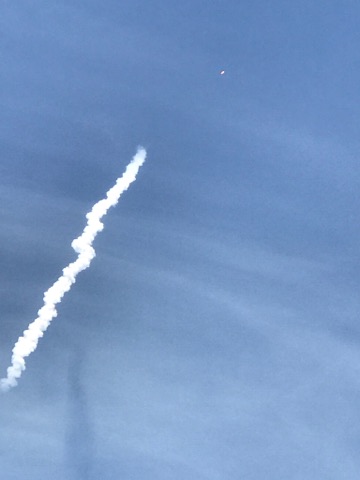
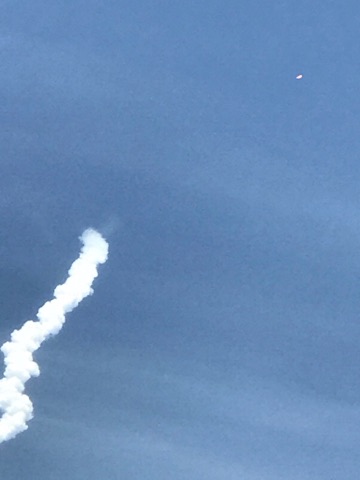
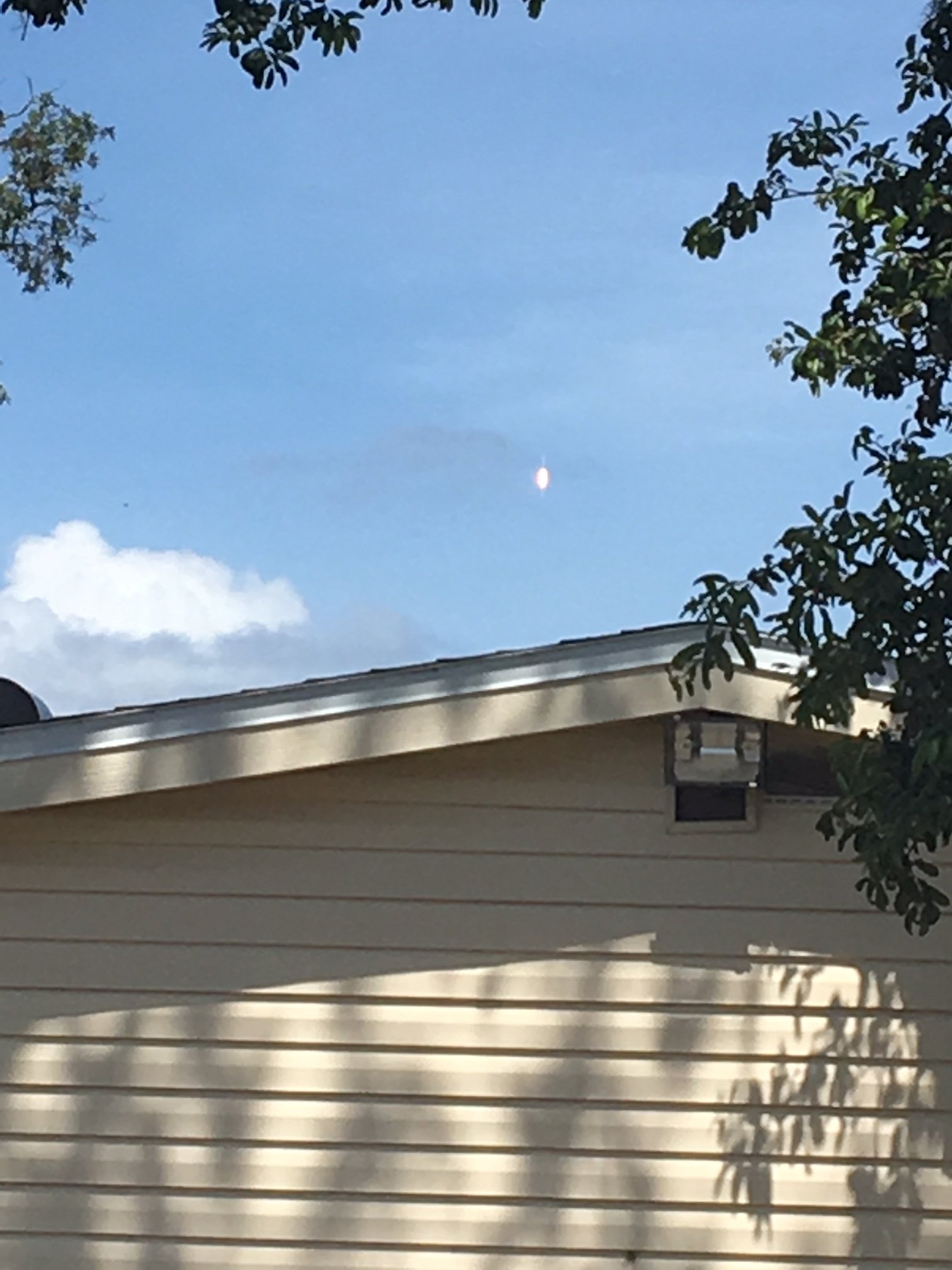

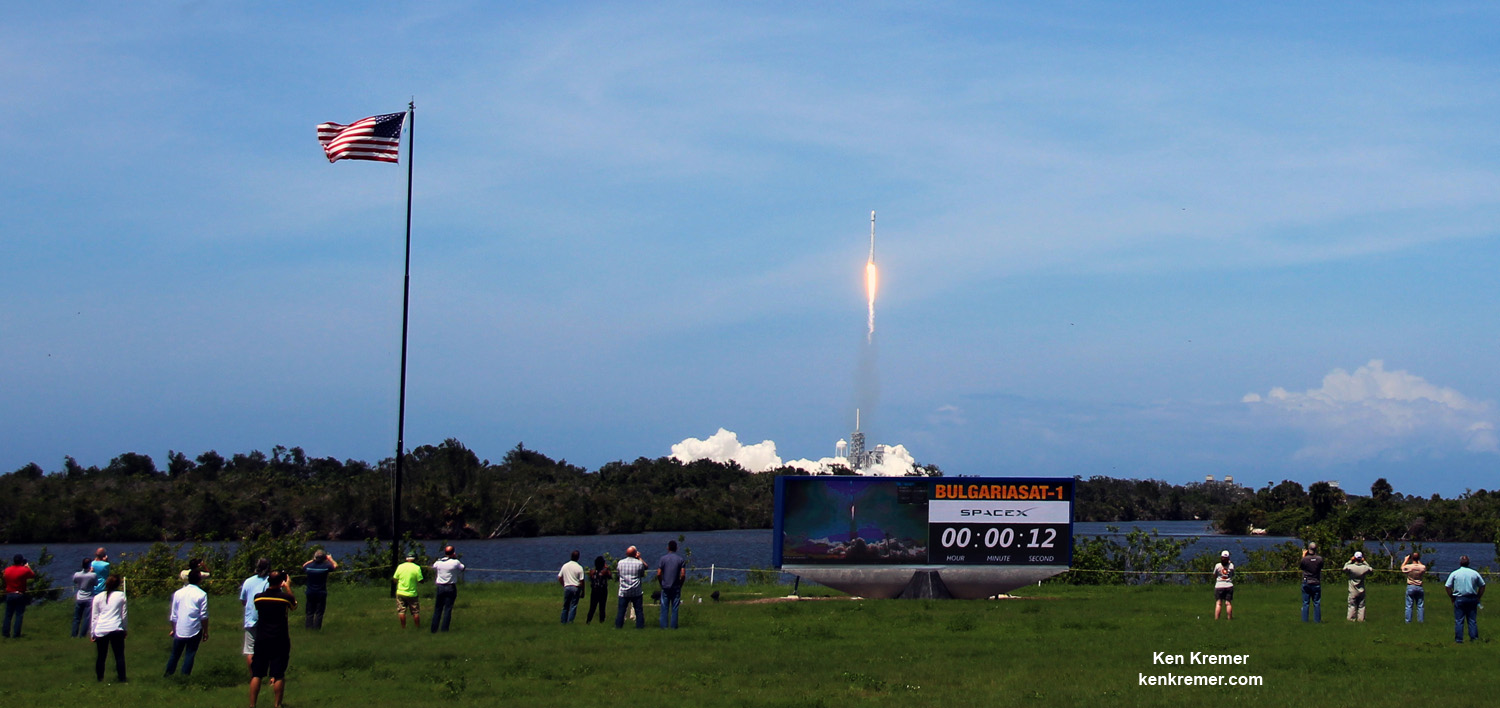

Yes! This is the future I was promised, quotidien space travel. Love it!
as is often the case, Ken supplies great photos.
I was born in the early 80’s. I remember reading popular science magazines from the year 1985 when I was about 12 years old. Those magazines had often articles about the future of humanity in space and the exploration of our solar system. I dreamed about where we would be in the future, I dreamed about human missions to Jupiter and Saturn and even further out in the solar system. A base on the moon was imminent and a mission to Mars was not that far away. I have always had the notion that humanity would not be able to survive for long on this planet if we continued on the path we were on. We will soon be in the 2020’s and my whole grown up life I have waited for my generation to experience our own moment of wonder and awe, just like what my parents experienced with the moon landing. But no, I have been let down again and again. If I had been good at maths and physics my career choice would have clear as day, but sadly that has not been the case. Now I put my hope to Elon Musk and Space-X. That is all we got. He actually makes me believe that humanity has fighting chance, and even that I have a chance of experiencing zero gravity in my lifetime. Just as Stevezodiac wrote in the comment at the top, I want and need the future I was promised! I believe Space-X can give us that!